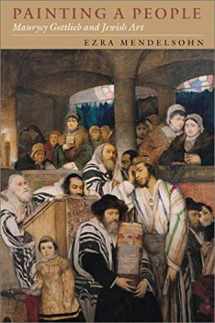
Painting a People: Maurycy Gottlieb and Jewish Art (Tauber Institute for the Study of European Jewry)
Book details
Summary
Description
Maurycy Gottlieb was born in 1856 in the small city known in Polish as Drohobycz, then attached to the province of Galicia in the Austro-Hungarian Empire. In the course of his very short life (he died at age 23), Gottlieb painted dozens of extraordinary works that have since found homes in museums in eastern Europe. (where he has long been honored as a Polish artist) and in Israel, where, following a major exhibition in 1991 in Tel-Aviv, he achieved the status of a founding father of Jewish art. The subjects of his paintings range from self-portraits and portraits of family and friends to “orientalist” themes, historical topics, and biblical scenes, including two important representations of Jesus. Ezra Mendelsohn situates this impressive body of work in the context of contemporary European painting, and uses Gottlieb’s work to illuminate the sociopolitical and cultural complexity of the multi-ethnic and multi-religious Austro-Hungarian Empire prior to World War I. Interpreting the paintings, and their reception in Gottlieb’s day and beyond, Mendelsohn touches on a number of key issues in modern Jewish history, among them identity, assimilation, acculturation, nationalism, the relationship between Jewry and European culture, and relations between Jews and non-Jews, particularly between Poles and Jews. Mendelsohn notes that Gottlieb “was an ideal subject for a historian of modern Jewish Eastern Europe with an interest in the visual dimension of Jewish culture.” Since the artist’s death in 1879, Polish nationalists, Jewish integrationists, Jewish nationalists, and finally the Israeli Jewish establishment, have laid claims to his art. Yet Mendelsohn shows that the subjects Gottlieb chose to paint―particularly the historical subjects―demonstrate that Gottlieb was first and foremost an artist of Jewish univeralism.


We would LOVE it if you could help us and other readers by reviewing the book
Book review



